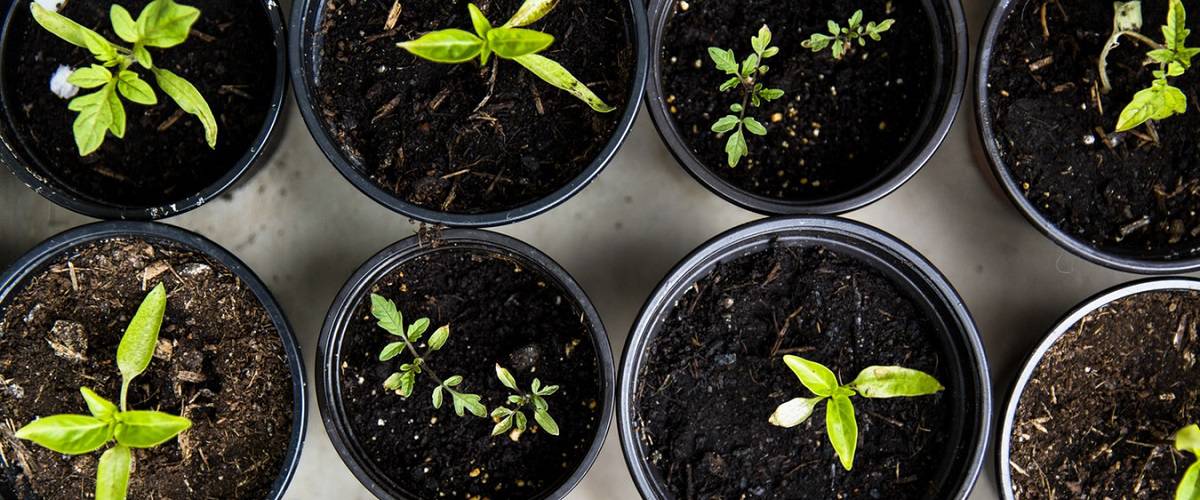So, you may not be able to access a garden for whatever reason. You may have a small amount of land or the soil is unsuitable for gardening. You may also be living in an apartment.
Well, don’t let these conditions stop you from growing vegetables! There are plenty of vegetables that will thrive indoors, so you can still have your home-grown produce, which can be dried or canned for those pesky emergencies.
While we can teach you how to garden indoors – but that will be for another article – we’re just going to focus on healthy, edible plants that will grow indoors. Just makes sure that you have a sunny window or ten before you begin your cultivating process.
Avocados
Avocados, while known to cost millennials a home (just kidding, of course), is tasty and infused with many nutrients, including to vitamin E, vitamin B6, and carotenoids, as well as healthy fats. Avocados are known to reduce the risk of cancer and heart disease.
For indoor gardening, you’ll want to purchase a dwarf avocado plant and have a tall ceiling – at least 10 feet tall.
To grow your avocados, be sure to add some sand to the bottom of a large pot that allows drainage. Next, fill it with regular potting soil.
From there, you will need to water the tree frequently, but you need to ensure that your tree will not become too wet. You’ll need to prune the shoots periodically.
Carrots
If you like carrots, then you’re in luck! They’re a great vegetable to grow indoors, and they are full of manganese, potassium, niacin, vitamins B6, A, C, and K, and more! It’s hard to find a food that packs such a hefty amount of nutrients.
You can purchase carrot seeds and a pot/window box, but be sure to water the soil and plant the carrots 1/4 inches deep into the soil. However, short carrots require a pot eight inches or deeper and the long carrots need 12 inches or deeper.
Finally, keep those precious vegetables in a sunny area (like a windowsill) and continuously water them but don’t water them too much (if the soil is wet and not damp, you are watering too much).
Lettuce
Lettuce may look complicated to grow, but it’s actually quite the opposite. Not only are they easy to grow, but are rather compact. Be on the lookout for cutting lettuces or leaf lettuce seeds. With these varieties, you can harvest the leaves and the lettuce will continue to grow. Just avoid iceberg lettuce, as they don’t provide you with the nutrition you need.
You should start planting your lettuce seeds in a pot and fill them with moist potting soil. Spread out a few seeds (up to 15) on the surface. Cover these seeds with 1/8 inch soil. Water them, but only until the soil feels damp. Finally, place them on a windowsill or in another sunny area.
Ginger
Finally, we have ginger. Per 100 grams, ginger offers 11 percent potassium, 8 percent dietary fiber, and 8 percent of dietary protein. It is also full of vitamin B-6, vitamin C, iron, and magnesium.
It is definitely worth growing.
But how do you go about growing ginger?
You need to begin by acquiring a living ginger root, which is available at nurseries, seed companies, or garden centers (such as in a grocery store). You’ll need a root that is firm with tight skin and includes eye buds on it. Furthermore, ensure that the root is plump.
You then soak the ginger root in water overnight. Next, you need to fill a shallow and wide pot with well-draining and rich potting soil.
Next, place the ginger root with the eye bud pointing up into the soil. After, spread one to two inches of the potting soil onto the root. Water the plant as a light spray. Then, you set the pot that not only stays warm but does not receive a lot of sunlight. Do not over water, and you should see ginger in a few months.
Tomatoes
Tomatoes are great to grow indoors. There are a variety of tomatoes you can grow, such as cherry, roma, campari, beef, etc. While they are not the greatest food on the planet, nutritionally speaking, they still are stuffed with vitamin A, potassium, thiamine, niacin, vitamin c, and more.
Keep in mind that tomatoes do best with fertilizer (liquid fertilizer specialized for vegetables work great), which increases the longevity of the plants.
You should start by planting seeds in egg cartons, then transplant the plants into a pot when they the roots appear firm and stable (when they are a few inches tall, anyway). You should also implant a string trellis or tall stake to provide sturdy support for the plant. Finally, fertilize every two weeks and water the plants only when the tomatoes need water (check online for when to water tomatoes). You can also use a drip irrigation for the vegetables.

